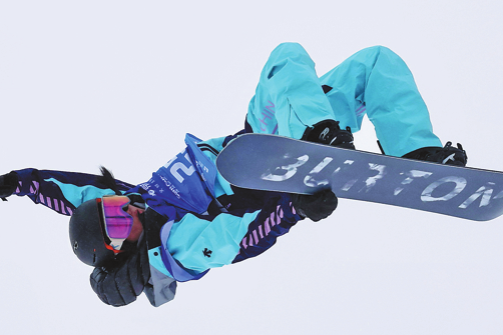Beijing 2022 brings new life to old 'Steel City'






The last fire
"With the last of the heavy smoke breaking out, the fire in the No 3 blast furnace was extinguished, signaling that Shougang had ceased steel production in the Beijing metropolitan area. The pressure gauge fell to zero, the pipeline was cut off, the machines stopped working, and the roaring sound no longer echoed."
This is part of the voice-over in a documentary called Shougang Relocation.
Furnace operator Ai Hongbo clearly remembers the event. "I could not hold back my tears. Neither could my six colleagues on the shift," he said. The seven men were on duty when No 3 furnace, the last one working at the plant, ceased operations on Dec 19, 2010.
Ai had spent 20 years in Shougang as a blast furnace operator.
"The iron latch of the furnace was opened, and then it closed," he said, looking skyward to hold back the tears.
It was a sudden and dramatic change. Without the heat of steel production, Qunming Lake in the surrounding area began to freeze during winter.
According to statistics, at the turn of the millennium, about 100,000 people worked and lived in the area.
From the construction of the plant to the end of production, Shougang produced 197.5 million metric tons of steel, employing 260,000 people nationwide at its peak.
From 1979 to 2009, the company accounted for about 61 billion yuan in profits and taxes paid. During the steel market's most prosperous period, Shougang Group's profits and taxes accounted for a quarter of Beijing's total income.
However, the rapid development of the steel industry ultimately exceeded the capital's environmental capacity. There was a saying in the past: "There is a black cover over the city of Beijing. The center of the cover is in Shijingshan-the western district of the capital where the old industry is located. At night, it moves to the city and sinks."
Liang Zongping, a top official with Shougang, recalled that when Beijing bid for the 2008 Olympic Games, there was a warning that the environmental problems that arose from the plant would hinder the attempt.
As a result, Shougang's entire steel-making complex (a city within a city) accelerated its relocation process in the run-up to, and aftermath of, Beijing 2008.
In February 2005, the National Development and Reform Commission officially approved the Shougang relocation plan and gave the green light for the company to gradually cease steel production at the Shijingshan plant.
"We had to face reality and relocate," Liang said. "It can be hard to accept reality, but we cannot live by nostalgia alone. The relocation of Shougang was in line with the country's overall development. With the rise in living standards, everyone had the right to ask for a better environment."
By 2011, 64,700 Shougang employees had been relocated to different working sites. Ai went to Shougang Jingtang Iron and Steel Co, the company's new steel plant in Caofeidian, a district of Tangshan in Hebei province on the Bohai Sea coast.
The relocation allowed Shougang to transform production from low-end construction steel to high-end sheet and long products, and fully implement waste recycling.
Most Popular
- Wuchuan Youth beat Shenzhen Yipingao to win soccer league championship
- Veteran pair not yet bored of the Olympic grind
- High-flying Gu raises the stakes
- Better late than never for tour champ Shi
- China's Wang retains women's singles title at WTT Finals
- Freeride World Tour Qualifier kicks off in Xinjiang's Hemu




























